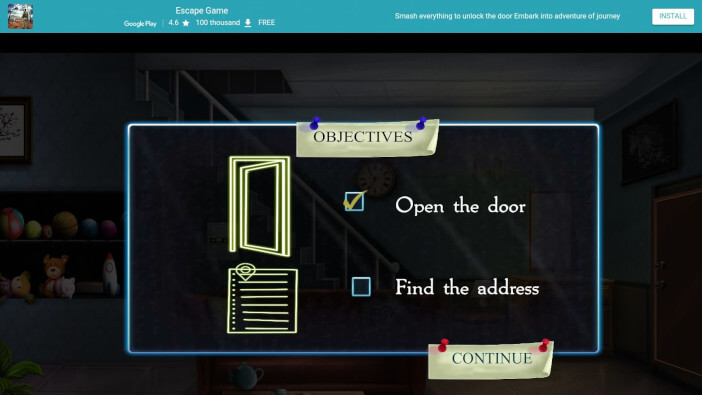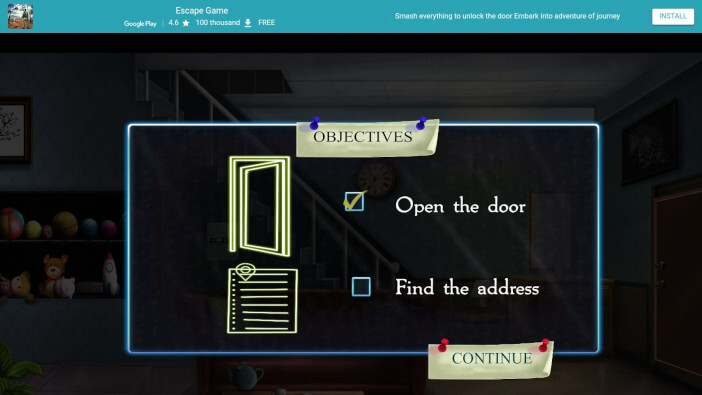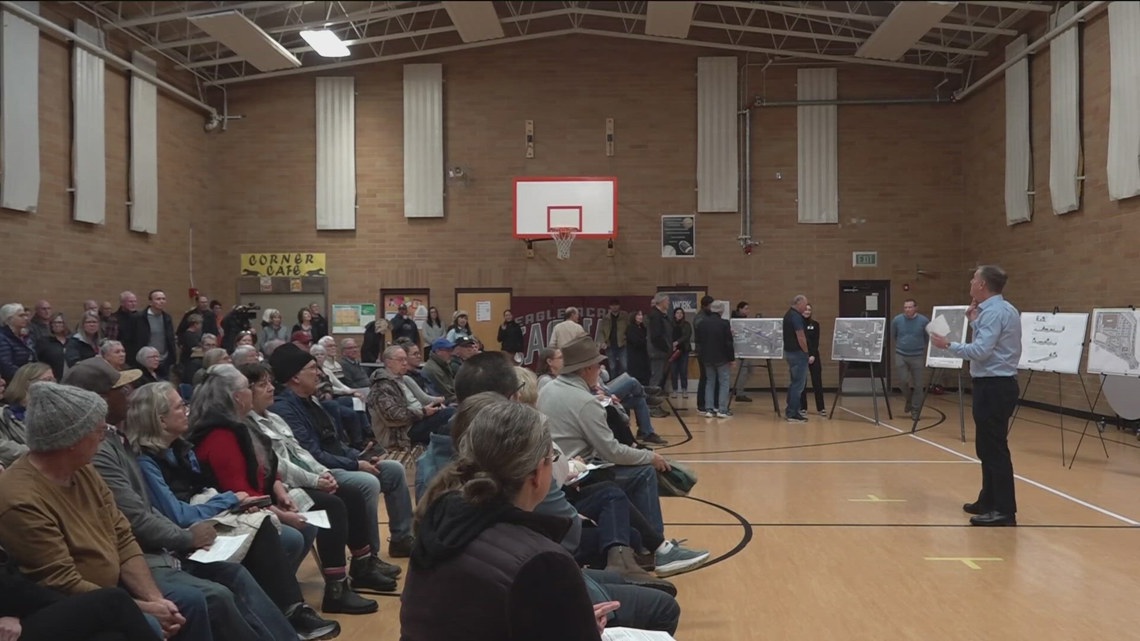Rec Sports
A place to play and dream


Rec Sports
New Wings West owner allegedly plans to raise costs for users

Black Bear Sports Group is the private equity-sponsored organization that purchased Wings West in October and plans to reopen it next year. They’ve allegedly been buying struggling ice rinks and forcing their resident youth hockey teams to pay premiums for in-house services like insurance and game streaming.
That’s according to a report by investigative news outlet The Lever published last month.
The report says that parents are not allowed to record their kids’ games. Instead, they can opt to use Black Bear TV, the company’s streaming service that costs between $25 and $50 per month. Black Bear also charges each player $50 a year for registration and insurance fees.
A source connected with a Kalamazoo ice user group that uses Wings West spoke to WMUK on the condition of anonymity so they don’t jeopardize their relationship with Black Bear. They said that Black Bear has proposed an hourly ice rate that’s 30% more expensive than the previous owner’s rate. For locker room rentals, they plan to charge about twice as much annually.
Black Bear is allegedly forcing the source’s group to purchase their uniforms from a partner in New Jersey called Breakaway Sports – business that, in the past, went to local manufacturers.
They’ve also been asked to tack a brand partnership onto their longtime club name. According to the source, Black Bear has threatened the group with heightened fees if it fails to comply.
At the time of publication, Black Bear Sports Group has not responded to WMUK’s requests for comment by phone and email.
Brad VandenBerg — managing director of Stadium Management Corporation, which sold Wings West to Black Bear in October — declined to comment.
Rec Sports
The DICK’S Sporting Goods Foundation Quarterly Giving Series: Q3 2025

Together, We Change Lives
NORTHAMPTON, MA / ACCESS Newswire / December 5, 2025 / Originally published on DICK’S Sporting Goods Sideline Report
Today we’re bringing you the latest quarterly giving series from The DICK’S Sporting Goods Foundation to highlight the great work being done in support of our mission to help inspire and enable youth sports participation.
In our third quarter of 2025, we:
-
Committed up to $2 million in matching funds to The Josh Gibson Foundation to build a new state-of-the-art youth sports facility in Pittsburgh.
-
Supported coaching summits in Chicago and New York City to give coaches tools to communicate with and empower youth athletes.
-
Put more gear that gives back on store shelves.
Read on to learn more.
Coming Soon: The Josh Gibson Champions Club & Sports Matter Center
The DICK’S Sporting Goods Foundation will contribute up to $2 million in matched donations to The Josh Gibson Foundation to build a new state-of-the-art youth sports facility in the Pittsburgh area.
The new facility, which will be called The Josh Gibson Champions Club & Sports Matter Center, will be developed and managed by The Josh Gibson Foundation. Designed to promote the mental, emotional and physical well-being of children, the facility will offer modern sports amenities, safe spaces for play and programming to help youth grow both on and off the field.
Read more about this powerful new partnership here.
The Power of Youth Sports Starts With Coaching
The DICK’S Sporting Goods Foundation and GameChanger recently joined Nike for its coaching summits to Chicago and New York City. Sports Matter grantees in those cities were invited to a free training experience led by the Center for Healing & Justice Through Sport (CHJS). Coaches walked away with tools for communicating with athletes, building team engagement and belonging and empowering youth athletes to be brave, not perfect.
Take a look back at the Chicago summit here.
Meet the Sports Matter Impact League Organizations
This year we launched the Sports Matter Impact League, making three-year commitments to nine incredible organizations in nine cities across the country. Now we want to introduce you to those organizations! Watch this video to learn more about them and all the great work they do to support youth athletes.
Gear That Gives Back
DICK’S Sporting Goods athletes (consumers) helped us turn shopping into support! Through a grant made possible by DSG’s giveback program, The DICK’S Sporting Goods Foundation’s Sports Matter Program donated a $100,000 grant to Kesem, a national nonprofit organization helping children cope with a parent’s cancer by offering free summer camps, day programs and virtual meetups.
Rec Sports
‘Horrible location:’ Proposed Eagle Costco sparks heated backlash and traffic concerns in a neighborhood meeting

Tensions flared as nearly 200 Eagle residents packed a gymnasium to oppose Costco’s plans, voicing concerns about traffic safety and community character.
EAGLE, Idaho — Nearly 200 Eagle residents filled the gymnasium at Eagle Academy High School on Thursday night to voice concerns about a proposed 160,000-square-foot Costco warehouse and fuel station at the intersection of Highway 55 and Hill Road.
The membership-only retailer wants to build on 27 acres that once housed the Masterpiece Quarry, which closed in 2003. The site has sat largely vacant since, though previous plans for a Village at Meridian-like concept never materialized. A for sale sign is currently on the property.
Highway 55 is one of Idaho’s most heavily traveled roads, and residents told KTVB traffic is already a major concern.
“There’s been a lot of development and a lot more traffic than it used to be,” said Greg Drabek, who lives near the intersection. “Eagle is not the little town it used to be.”
Erika Lunbeck, who lives just 500 feet from the proposed site, said she learned about the project only recently.
“48 hours prior to this meeting, I received a notice on my door that there was going to be a question-and-answer session here tonight,” Lunbeck said.
When the meeting turned out to be an informational open house rather than a group question-and-answer format, tensions rose among attendees.
“It’s a waste of our time to be here,” said Ray Gillenwater, who also lives near the project. “We get a three-minute spiel from a real estate developer, and then he says, now it’s an open house. Go and walk around. It’s like, well, no, we’re here to give you our feedback. We’re here to have a conversation.”
John Shaw, a director of real estate development for Costco, facilitated the meeting. He told KTVB this is the typical style of neighborhood meetings they’ve held in the past, and once a formal application is submitted with the city a public hearing opportunity would be held. He added that a neighborhood meeting is a requirement to hold before a formal application for the project to the city.
Residents could ask questions individually to engineers stationed around the room at different poster boards. The majority of people KTVB spoke to were against the project, mainly due to traffic concerns, while a few saw the project as a good economic opportunity for the area.
Engineers at Kittleson and Associates, who completed a traffic study for the project and submitted it to Ada County Highway District (ACHD), said they estimate thousands of vehicle trips to and from the Costco each day. They’ve drafted plans to widen roads and add roundabouts in the area to help with any concerns. The engineers said the traffic study could be modified before Costco submits a final application, with a traffic study to the city for consideration.
Costco is planning for approximately 900 parking spots at the location. Even with proposals for traffic improvements, residents still worry traffic will spill over into the nearby neighborhoods and roads.
“You put a business with that much volume right next to all these houses, and it just destroys the whole community,” Gillenwater said.
“It’s a horrible location,” Lunbeck said.
Lunbeck said the location is particularly dangerous because it sits across from the Optimist Youth Sports Complex.
“There are so many children crossing the streets. The amount of cars going through is astronomical, astronomical, and it’s only a matter of time before something seriously tragic will happen,” Lunbeck said. “It is a horrible location.”
She also raised concerns about local wildlife but said project members didn’t have many answers.
“We have prong horn on our street,” Lunbeck said. “We have golden eagles flying above it. These are supposed to be protected habitats, and I see no protections happening.”
Shaw did not indicate when Costco plans to submit land use applications to the city of Eagle.
Rec Sports
GEAR FOR GOOD INITIATIVE NAMES FIVE YOUTH SOCCER PROGRAM BENEFICIARIES TO HELP GROW THE GAME IN 2026

- Capitolo Youth Soccer Club (CYSC) – CYSC uses soccer as a vehicle to instill universal values of fitness, fun, sportsmanship, respect, community, access, and equality. CYSC has a unique approach and philosophy to teaching soccer, nurturing players’ passion by providing an atmosphere in which they are free to experiment, create, and fail, without fear of judgment, resulting in truly fine players and ambassadors of the Beautiful Game.
- Dr. Henry H. Davis School – The Dr. Henry H. Davis School in East Camden is named after a Camden physician, school board member, Camden’s first medical inspector, and first chief medical inspector. His work in the areas of school health and nutrition saved countless children’s lives in Camden City. Currently, the school houses Pre-Kindergarten through 8th grade for approximately 475 students of various learning modalities.
- Project Primacy – Project Primacy Foundation is a non-profit organization focused on youth soccer, particularly for Black and Brown children in inner-city Philadelphia. They aim to provide access to sports, mentorship, and other opportunities to support their development. The foundation has been involved in various initiatives, including free soccer clinics, and fundraising events like their “Dribble & Carry” Broad Street RUNdraiser.
- Safe-Hub Philly – Safe-Hub provides a physically and emotionally safe space for young people to access opportunities and support through soccer-based out-of-school-time programs that focus on personal development, health, education, and employment. Their goal is to bring high-quality sports programming and supportive services to families, providing a one-stop-shop for families to receive support through the stigma-free circumstances of coming to soccer practice.
- Youth Development United provides children from under-served communities with extracurricular opportunities, inspiring them to excel. Specifically, YDU provides children and their families with memorable after-school and weekend opportunities that increase their access to mentorship, wellness, and personal development through various sports and recreational opportunities.
Alan Bethke, Senior Vice President of Marketing, Subaru of America: “At Subaru, we believe in showing up for our communities in ways that truly matter. These organizations are already doing powerful work to support kids through the game of soccer, and we’re proud that Subaru: Gear for Good will help deepen that impact, especially as we head into 2026. Every piece of equipment collected and donated brings us closer to breaking down barriers and making the game more accessible for all.”
Each beneficiary was selected for its mission to support local youth through soccer, sports, and development programs. These organizations will receive brand-new gear from Subaru tailored to their specific programs and needs. Through partnerships with Major League Soccer’s Philadelphia Union and the youth sports nonprofit Leveling the Playing Field, Subaru is also collecting soccer equipment via its donation bin network, which includes 17 Subaru retailers and Subaru Park, the Union’s home stadium in Chester, PA. This gear will be distributed to more than 100 youth programs on an ongoing basis in coordination with Leveling the Playing Field and Philadelphia Parks & Recreation. Collection will continue through April 3, 2026, as Subaru works toward its goal of distributing at least 2,026 pieces of new and gently used equipment.
Susan Slawson, Commissioner, Philadelphia Parks & Recreation: “Philadelphia Parks & Recreation is proud to stand alongside Subaru, the Philadelphia Union, and Leveling the Playing Field in a partnership that puts our young people first. Every day, we see how access to sports can open doors—building confidence, community, and dreams for the future. As we prepare for the world stage in 2026, this initiative underscores Philadelphia’s commitment to giving every young person a chance to truly see themselves in the game.”
As part of the collection initiative, community members throughout Philadelphia and Southern New Jersey can donate new or gently used soccer gear, including cleats, goalie gloves, shin guards, soccer balls, and more, through April 3, 2026, for a chance to win a range of prizes, including a trip to the 2026 MLS All-Star Weekend. The Subaru: Gear for Good Sweepstakes (official rules) is open to legal U.S. residents at least 18 years of age who live within a 75-mile radius of Subaru Park.
Kaitlin Brennan, Chief Operating Officer, Leveling the Playing Field: “Partnering with Subaru in celebration of the global soccer heading to Philadelphia greatly amplifies our mission – to expand access and equity within the realm of youth sports. This effort provides children with the opportunity to get involved with sports at a young age, granting the chance to experience the holistic benefits of youth sports on their physical, mental, and emotional health.”
Charlie Slonaker, Chief Revenue Officer, Philadelphia Union: “At the Union, we’re committed to making the game accessible to every child who wants to play. The Subaru: Gear for Good initiative helps remove equipment barriers, so access is determined by passion, not resources. With the excitement of 2026 coming to Philadelphia, we’re proud to work with Subaru of America and Leveling the Playing Field to expand opportunities for youth across the area and help continue to grow the game.”
The Subaru: Gear for Good initiative will give even more kids access to the gear they need to join teams, stay active, and enjoy the game. Any surplus donated items will be shared with additional youth organizations throughout the collection period. For more information, including donation locations, eligibility details, and official rules, visit philadelphiaunion.com/SubaruGearforGood.
About Subaru of America, Inc.
Subaru of America, Inc. (SOA) is an indirect wholly owned subsidiary of Subaru Corporation of Japan. Headquartered in Camden, N.J., the company markets and distributes Subaru vehicles, parts, and accessories through a network of about 640 retailers across the United States. All Subaru products are manufactured in zero-landfill plants, including Subaru of Indiana Automotive, Inc., the only U.S. automobile manufacturing plant designated a backyard wildlife habitat by the National Wildlife Federation. SOA is guided by the Subaru Love Promise®, which is the company’s vision to show love and respect to everyone and to support its communities and customers nationwide. Over the past 20 years, SOA and the SOA Foundation have donated more than $340 million to causes the Subaru family cares about, and its employees have logged over 115,000 volunteer hours. Subaru is dedicated to being More Than a Car Company® and to making the world a better place. For additional information, visit media.subaru.com. Follow us on Facebook, Instagram, LinkedIn, TikTok, and YouTube.
About Philadelphia Union
The Philadelphia Union is an innovative, forward-thinking professional soccer club competing in Major League Soccer (MLS) and one of Philadelphia’s five major league sports teams. Driven by unprecedented fan support, MLS awarded the Philadelphia expansion franchise rights to Jay Sugarman in 2008 and the Union kicked off its inaugural season in 2010. The club has reached the finals of the Lamar Hunt U.S. Open Cup in 2014, 2015 and 2018, and has appeared in the MLS Cup Playoffs in 2011, 2016, 2018, 2019, 2020, 2021, 2022, and 2023. In 2020, the Union were awarded the club’s first Supporters’ Shield after finishing with the best regular season record in MLS. In 2022, the Union reached the MLS Cup Final for the first time in club history. In 2023, the Union reached the Eastern Conference semifinals, becoming the only Eastern Conference team to reach the semifinals in four of the last five seasons.
The Philadelphia Union is part of parent company Union Sports and Entertainment LLC, which also operates Philadelphia Union II, the Philadelphia Union Academy, Philadelphia Union Foundation and Philadelphia Union Youth Programs. With a commitment to developing youth, the Union has signed 25 academy prospects to homegrown player contracts.
The Union play at Subaru Park in Chester, PA on the banks of the Delaware River. The custom-built stadium is part of the Union’s unique waterfront campus, featuring a historic power plant rebuilt into a 400,000 sq. ft. creative office building, a state-of-the-art Training Complex, over seven acres of professional-grade practice pitches, and the newly announced WSFS Bank Sportsplex, a world-class, 365-day-a-year sports and recreation complex featuring indoor fieldhouse and seven outdoor fields. For more information about the Philadelphia Union, visit www.philadelphiaunion.com and follow @PhilaUnion on Twitter or Instagram.
About Leveling the Playing Field
Leveling the Playing Field (LPF) is a nonprofit organization committed to expanding access and equity in youth sports by redistributing new and gently-used sports equipment to under-resourced communities. Founded in 2013, LPF addresses the growing gap between those who can afford to participate in sports and those who cannot, recognizing the high cost of sporting goods as a major barrier.
Through a network of community donations and volunteers, LPF collects and sorts sports and recreational equipment, then supplies it to schools, community programs, and youth organizations across several regions. This philanthropic model not only provides gear but also empowers organizations to redirect limited budgets toward transportation, nutrition, staffing, and program expansion—making youth sports more inclusive and accessible for all.
With LPF’s support, youth programs are able to stretch their resources further. By removing the barrier of equipment cost, LPF helps create more inclusive and enriching opportunities for young athletes. Together, we’re building a future where every child has the chance to play, grow, and thrive through sports.
For more information, visit levelingtheplayingfield.org and follow us @lpfsports on Instagram.
Philadelphia Parks & Recreation
Philadelphia Parks & Recreation (PPR) advances the prosperity of the city and the progress of its people through stewardship of nearly 10,200 acres of public land and waterways, and management of 500 recreation buildings, 166 miles of trail, and 250 playgrounds. PPR offers safe, enjoyable recreation, environmental and cultural programs and events throughout Philadelphia’s parks and recreation system. PPR promotes the well-being and growth of the city’s residents by connecting them to the natural world, to each other, and to fun, physical, and social opportunities. More than 3,000 full-time and seasonal employees proudly serve Philly residents every day, ensuring the department remains a modern, equitable and exceptional parks and recreation system. Visit www.phila.gov/parksandrec and follow @philaparkandrec on Facebook or Instagram.
Diane Anton
Corporate Communications Manager
(856) 488-5093
[email protected]
Adam Leiter
Corporate Communications Specialist
(856) 488-8668
[email protected]
SOURCE Subaru of America, Inc.

Rec Sports
NIL in prep sports another threat to childhood
Dec. 5, 2025, 6:01 a.m. ET
You’ve probably spotted the billboards around the region or seen the TV ads for Akron Children’s featuring the pediatric hospital’s latest campaign: More childhood, please.
We completely agree with this sentiment.
This clever trademarked slogan refers to the hospital’s mission of “protecting, preserving and enriching every moment in your child’s life – from birth to graduation day.” But to us, it also touches on an increasing societal concern.
These days, it seems, children and adolescents are being pushed to grow up faster than ever before.
We see the introduction of name, image and likeness deals at the high school level in Ohio as just another example of this concerning trend.
The Ohio High School Athletic Association announced last month that a referendum vote for name, image and likeness by high school principals passed 447-121, with 247 schools abstaining from voting. The vote comes after Ohio State commit Jamier Brown successfully sued to benefit from up to $100,000 in potential NIL deals.

Ohio is one of the last states to permit some form of NIL for high school student athletes with their parents’ permission. Only Alabama, Hawaii, Indiana, Michigan and Wyoming still prohibit it.
Granted, only a select few athletes will command six- or seven-figure deals, Thilo Kunkel, a Temple University professor who has studied NIL for a decade, told the Beacon Journal. And we understand why these elite athletes and their families would be hard-pressed to turn down opportunities for financial security.
But will more young athletes − even those who aren’t truly at an elite level − feel pressured by their parents or their peers to pursue NIL deals rather than simply enjoying their sport for the fun of it?
Several Greater Summit County athletic administrators expressed concerns last month in an anonymous survey conducted by the Beacon Journal.
“I am very concerned that parents will be expecting coaches to secure NIL deals for their students,” one administrator said. “It will be an unfair expectation on our coaches, who are already overburdened with unrealistic parental expectations and demands. Parents will ‘shop’ their students to the schools and coaches that can promise them NIL deals. Also, NIL has had a very negative impact on the NCAA model, and I am concerned that we will see the same effect at the high school level. It may not be Year 1, 3 or 5 … but eventually I believe we will regret having opened this Pandora’s box.”
“I understand and can appreciate an athlete earning money based on their athletic ability,” another said. “However, I believe earning revenue while still in high school violates the philosophy of amateurism and school-based athletics.”
One area athletic director said they fear NIL will become a distraction: “We want to maintain the educational and developmental focus of high school athletics, not let commercial opportunities overshadow the core values of teamwork and sportsmanship.”
Some young athletes already have been under increased pressure to pick their sport and specialize, training year-round in a single activity beginning as early as age 11 or younger. According to the American Orthopoedic Society for Sports Medicine, early specialization can hinder overall motor development, increase the risk of overuse injuries and lead to burnout.
“Youth often specialize early due to the influence of coaches and parents, but relying on these external pressures can hinder long-term engagement and elite success,” Drs. Joseph H. Guettler and Alexandria Chrumka wrote in an article on the topic.
At the same time, the prevalence of private club and travel teams is turning sports into high-stakes − and high-cost − ventures for some kids.
Researchers at Ohio State University and Vassar College found children who were born in the 1990s were about three times as likely to participate in private clubs and travel sports as those who were born in the 1950s, according to a study published in the Journal of Sport and Social Issues.
“For a lot of parents, there’s been a shift from sports as a way to have fun and get exercise to using sports as a way to position their kids for future success in college and beyond,” said Chris Bjork, a professor of education at Vassar College.
At least one Ohio lawmaker wants to prohibit high school and middle school students from profiting from NIL. Rep. Adam Bird, R-New Richmond, told the USA TODAY Network Ohio statehouse bureau that Ohio’s young athletes shouldn’t face the pressure of making money from their sport
“Sports should be about fun and learning and growing,” said Bird, a former coach and school superintendent. “It’s absurd to think that the athletes are going to now make more money than the coach or the referee or the bus driver that’s hired to bus them to the games.”
It’s a proposal worth further consideration.
In the meantime, let kids be kids.
Encourage them to try different activities and play sports for the fun of it − not for the pursuit of money or fame.
This piece was written by Akron Beacon Journal Executive Editor Cheryl Powell on behalf of the editorial board of the Beacon Journal. Editorials are fact-based assessments of issues of importance to the communities we serve. These are not the opinions of our reporting staff members, who strive for neutrality in their reporting.
Rec Sports
New Martinsville Christmas in the Ville Returns | News, Sports, Jobs


Last Saturday evening downtown New Martinsville came alive with happy children and smiling parents. Once again, the annual Christmas parade filled the street with colorful lights, and twinkling bulbs. Parade floats decorated by skilled hands, shimmered with gold and silver garland.
Brightly colored fire trucks from most every community in the area were part of the parade. Three local bands played Christmas music as they marched proudly down the crowd lined street. The temperatures were in the 40s and felt like the 20s. Still, hundreds turned out to see the many decorated floats and vehicles.
Once again, the Wetzel County Chamber of Commerce and the city of New Martinsville along with the Wetzel County Commission teamed up to support the event and give the community a jump start on the Christmas Season.
Throughout the day on Saturday there was plenty to do and enjoy in downtown New Martinsville, as vendors set up and activities for kids took place in the upstairs of Stalders on Main St. It was an old time celebration where friends and families met to enjoy the day and festivities.
Once a year as the Holiday season rolls around, towns throughout the country turn to magic, and New Martinsville was no exception as they put on a wonderful day for all to enjoy.
The lineup for the parade started near Bruce Park, with floats from businesses, youth sports teams and local organizations prepared to converge on Main Street. With a 5:30 pm start time, you could feel the anticipation from those lining the streets. Within minutes of starting the parade didn’t disappoint as young and old fought off the chill and watched in wonder as music and magic filled the air.
Fallon Wiley of Sardis Ohio was handed a huge Teddy Bear from Matt Reusser of the VFW Post 9930 District 5 Motorcycle Group in Duffy Ohio. Fallon is the daughter of Scott and Lexy Wiley of Sardis Ohio and Jimbo and Joannie Wells of Sardis Ohio.
Santa Claus, waved and said it all with his booming voice echoing out loud, “Merry Christmas, Ho, Ho, Ho.”
The twinkle in the little ones eyes made it all worthwhile.
-

 Rec Sports2 weeks ago
Rec Sports2 weeks agoFirst Tee Winter Registration is open
-

 Rec Sports1 week ago
Rec Sports1 week agoFargo girl, 13, dies after collapsing during school basketball game – Grand Forks Herald
-

 Motorsports2 weeks ago
Motorsports2 weeks agoCPG Brands Like Allegra Are Betting on F1 for the First Time
-

 Sports2 weeks ago
Sports2 weeks agoVolleyball Recaps – November 18
-

 Motorsports2 weeks ago
Motorsports2 weeks agoF1 Las Vegas: Verstappen win, Norris and Piastri DQ tighten 2025 title fight
-

 Sports2 weeks ago
Sports2 weeks agoTwo Pro Volleyball Leagues Serve Up Plans for Minnesota Teams
-

 Sports1 week ago
Sports1 week agoUtah State Announces 2025-26 Indoor Track & Field Schedule
-

 Sports2 weeks ago
Sports2 weeks agoSycamores unveil 2026 track and field schedule
-

 Sports1 week ago
Sports1 week agoTexas volleyball vs Kentucky game score: Live SEC tournament updates
-

 NIL5 days ago
NIL5 days agoBowl Projections: ESPN predicts 12-team College Football Playoff bracket, full bowl slate after Week 14




















































